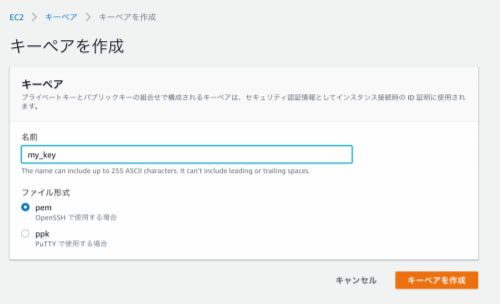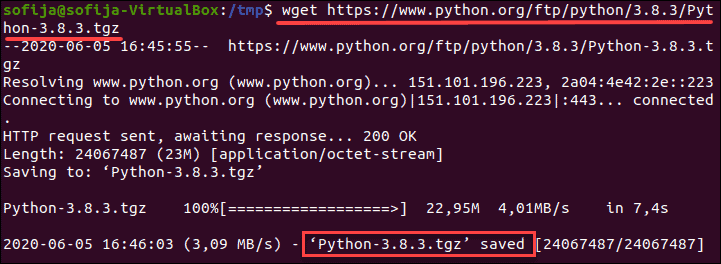

- #Python 3 install http.server how to#
- #Python 3 install http.server code#
- #Python 3 install http.server Offline#
- #Python 3 install http.server windows#
How to Manually Install Python Packages, Steps to Install a Package in Python using PIP. If the package install fails, it will be because one of the dependencies has not been installed. Now you need to CD into each individual package folder, and run this command: python setup.py install and let it run. Open your terminal or CMD and CD into the "OFFLINE_SETUP_FOLDER". How to Manually Install Python Packages, How do I install Python packages without Internet? Refer back to the Installing Python section if needed. Then, select Run as administrator (by running the Command Prompt as an administrator, you’ll (3) In the Command Prompt, type “cd\” as this.
#Python 3 install http.server windows#
(1) First, type Command Prompt in the Windows search box: (2) Right click on the Windows Command Prompt. Steps to Install a Package in Python using PIP. Install packages not provided by your package manager with pip install somepackage -user. Installing Python packages (Offline mode), Use your OS package manager for as much as possible (Python itself, NumPy, and other libraries).
#Python 3 install http.server Offline#
Could someone knowledgable either remove the calls, or add a comment why they're necessary? Thanks.Install python packages offline on server How to install python packages offline windows What's the matter with server_close()? I can call the method, but it is undocumented (see ). I'm not picky, just as long as something is chosen. I encourage all work towards putting a standard web framework into the default Python distribution. I like the BaseHttpServer because it is in the default Python distributions. For most cases, using a more complete framework will be preferable (see WebProgramming). This is a fair amount easier to work with than the raw BaseHTTPServer. There exist tools like CherryPy which will create a single-file Python HTTP server (based on BaseHTTPServer).
#Python 3 install http.server code#
I'd also like to add code here showing how to service a POST request.

But I want to make something that works in a single install. I'd ultimately like to see a BaseHttpServer here that can both handle XML-RPC requests (with that request handler,) and normal web requests (with a custom handler.) Then, in the handler, use s.server to get to the server, and access the parameters through it.ĭocXmlRpcServer - self-documenting XML-RPC serversĬgiScripts - using invoked CGI scripts, rather than running micro-web servers That is, make a subclass of the server, that accepts some additional parameters. When you want to make your server respect some parameters, it's easiest to do so via the server, rather than the handler. asctime(), " Server Stops - %s : %s " % ( HOST_NAME, PORT_NUMBER) serve_forever() 30 except KeyboardInterrupt: 31 pass 32 httpd. asctime(), " Server Starts - %s : %s " % ( HOST_NAME, PORT_NUMBER) 28 try: 29 httpd. HTTPServer 26 httpd = server_class(( HOST_NAME, PORT_NUMBER), RedirectHandler) 27 print time. do_HEAD() 23 24 if _name_ = ' _main_ ': 25 server_class = BaseHTTPServer. BaseHTTPRequestHandler): 17 def do_HEAD( s): 18 s. 12 REDIRECTIONS = 14 LAST_RESORT = " " 15 16 class RedirectHandler( BaseHTTPServer. 3 """ 4 5 import BaseHTTPServer 6 import time 7 import sys 8 9 10 HOST_NAME = ' ' # !!!REMEMBER TO CHANGE THIS!!! 11 PORT_NUMBER = 80 # Maybe set this to 9000. This code demonstrates simple URL redirection:ġ """ 2 URL redirection example. serve_forever() 32 except KeyboardInterrupt: 33 pass 34 httpd. asctime(), " Server Starts - %s : %s " % ( HOST_NAME, PORT_NUMBER) 30 try: 31 httpd. HTTPServer 28 httpd = server_class(( HOST_NAME, PORT_NUMBER), MyHandler) 29 print time. write( " ") 25 26 if _name_ = ' _main_ ': 27 server_class = BaseHTTPServer. ") 21 # If someone went to "", 22 # then s.path equals "/foo/bar/". send_header( " Content-type ", " text/html ") 18 s.

end_headers() 14 def do_GET( s): 15 """Respond to a GET request.""" 16 s. send_header( " Content-type ", " text/html ") 13 s. BaseHTTPRequestHandler): 10 def do_HEAD( s): 11 s. 1 import time 2 import BaseHTTPServer 3 4 5 HOST_NAME = ' ' # !!!REMEMBER TO CHANGE THIS!!! 6 PORT_NUMBER = 80 # Maybe set this to 9000.


 0 kommentar(er)
0 kommentar(er)
